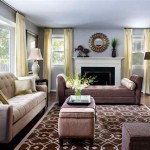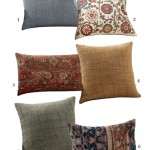DIY Home Decorating Ideas on a Budget
Home decorating often evokes images of expensive renovations, designer furniture, and professional assistance. However, creating a stylish and personalized living space does not necessitate a large financial investment. Numerous do-it-yourself (DIY) projects and resource-conscious strategies can transform a house into a home without breaking the bank. These affordable decorating options allow homeowners to express their creativity, repurpose existing items, and add unique touches that reflect their individual style.
This article explores a range of DIY home decorating ideas that prioritize affordability and creativity. The focus is on practical and accessible projects that can be undertaken by individuals with varying levels of skill and experience. By employing cost-effective materials, repurposing existing belongings, and embracing innovative techniques, homeowners can achieve aesthetically pleasing and personalized interiors while adhering to a strict budget.
Repurposing and Upcycling Existing Items
One of the most effective ways to decorate on a budget involves repurposing and upcycling existing items. Instead of discarding old furniture or decorative pieces, consider giving them a new lease on life through simple modifications. This approach not only saves money but also promotes sustainability by reducing waste.
Old wooden pallets, for example, can be transformed into a variety of functional and decorative items. They can be sanded, painted, and repurposed into coffee tables, headboards, or even vertical gardens. Similarly, old ladders can be converted into unique shelving units for displaying books, plants, or decorative objects. The key is to look beyond the original purpose of an item and envision its potential in a new form.
Glass jars and bottles, often discarded, can be cleaned and repurposed as vases, candle holders, or storage containers. These items can be painted, decorated with twine or ribbon, or simply left clear to display their contents. Old clothing, such as t-shirts or jeans, can be cut up and used to create patchwork quilts, pillow covers, or even wall art. By employing a little creativity and some basic crafting skills, homeowners can transform discarded items into valuable and visually appealing decorative elements.
Furniture can also be upcycled through simple modifications. Replacing outdated hardware, such as knobs and pulls, can dramatically alter the look of a dresser or cabinet. Painting furniture is another effective way to update its appearance and coordinate it with a new color scheme. Upholstering an old chair or sofa with new fabric can give it a fresh and modern look. These minor adjustments can significantly enhance the aesthetic appeal of existing furniture without the expense of purchasing new pieces.
Creating DIY Wall Art and Decorations
Wall art can significantly impact the overall ambiance of a room, but purchasing artwork can be a substantial expense. Creating DIY wall art is a budget-friendly alternative that allows homeowners to express their creativity and personalize their living spaces.
One popular DIY wall art technique involves using stencils. Stencils can be purchased at craft stores or created at home using cardboard or acetate sheets. They can be used to paint patterns, quotes, or images directly onto walls or canvases. This technique is particularly effective for creating bold and graphic designs.
Another affordable option is to create gallery walls using a collection of framed prints, photographs, or artwork. Prints can be downloaded for free from online resources or created using digital photography and printing services. Thrift stores and flea markets are also excellent sources for finding inexpensive frames and artwork. Arranging the frames in a visually appealing manner can create a personalized and impactful wall display.
Fabric remnants can also be used to create unique wall hangings. Stretching fabric over a wooden frame creates a simple and elegant piece of art. Alternatively, fabric can be used to create banners or tapestries. Natural elements, such as branches, leaves, and flowers, can also be incorporated into wall hangings to add texture and visual interest.
DIY wall shelves are both functional and decorative. Simple wooden shelves can be easily constructed using basic lumber and hardware. These shelves can be painted or stained to match the room's decor and used to display books, plants, or decorative objects. Floating shelves, which appear to be mounted directly to the wall without visible supports, are another stylish and affordable option.
Implementing Cost-Effective Lighting Solutions
Lighting plays a crucial role in setting the mood and ambiance of a room. While designer lighting fixtures can be expensive, there are numerous cost-effective lighting solutions that homeowners can implement to enhance their living spaces.
Repurposing glass jars and bottles into candle holders is a simple and affordable way to add warm and inviting light to a room. These can be decorated with paint, ribbon, or twine to match the decor. String lights, also known as fairy lights, are another inexpensive way to add a touch of whimsy and sparkle to a room. They can be draped around furniture, hung along walls, or wrapped around plants.
Replacing existing light fixtures with energy-efficient LED bulbs is a cost-effective way to reduce energy consumption and lower electricity bills. LED bulbs also last longer than traditional incandescent bulbs, reducing the need for frequent replacements. Dimmers can also be installed on existing light fixtures to control the intensity of the light and create different moods.
DIY lampshades are a creative way to personalize lighting fixtures. Old lampshades can be recovered with new fabric or decorated with trim, ribbon, or beads. Alternatively, new lampshades can be created using wire frames and fabric. These personalized lampshades can add a unique touch to any room.
Mirrors can be strategically placed to reflect light and make a room appear larger and brighter. Placing a mirror opposite a window can maximize natural light and create a more open and airy feel. Mirrors can be purchased inexpensively at thrift stores or flea markets or created using mirror tiles.
Consider the use of natural light whenever possible. Open curtains and blinds during the day to maximize natural light. Trimming trees and shrubs that block sunlight can also improve the amount of natural light entering a room.
Utilizing Paint and Color Strategically
Paint is one of the most transformative and affordable decorating tools available. A fresh coat of paint can instantly update a room, change its mood, and coordinate its decor. By utilizing paint and color strategically, homeowners can create visually appealing and personalized living spaces without spending a fortune.
Before painting, consider the color scheme of the room and the desired mood. Light colors can make a room appear larger and brighter, while dark colors can create a more intimate and cozy atmosphere. Neutral colors are versatile and can be easily paired with other colors and decor. Test paint colors on a small area of the wall before committing to a full room to ensure that the color is exactly as desired in the lighting conditions of the room.
Accent walls are a cost-effective way to add color and visual interest to a room. Painting one wall a different color than the other walls can create a focal point and add depth to the space. This technique is particularly effective for highlighting architectural features or creating a dramatic effect.
Stenciling patterns or designs onto walls is another creative way to add visual interest. Stencils can be purchased at craft stores or created at home using cardboard or acetate sheets. This technique is particularly effective for creating geometric patterns, floral designs, or custom artwork.
Painting furniture is a simple and affordable way to update its appearance and coordinate it with a new color scheme. Consider painting old dressers, tables, or chairs in bright colors or using distressed finishes for a vintage look. Painting kitchen cabinets can also dramatically transform the look of a kitchen without the expense of replacing them.
Repainting trim and molding can also freshen up a room. Use a semi-gloss or gloss paint for trim and molding to create a durable and easy-to-clean finish. Consider painting trim and molding in a contrasting color to the walls to create a more defined and sophisticated look.
Embracing Textile Transformations
Textiles, such as curtains, rugs, pillows, and throws, can significantly impact the overall aesthetic of a room. Updating these items can be a cost-effective way to refresh a space and add personality. Instead of purchasing expensive new textiles, consider DIY alternatives or repurposing existing materials.
Creating DIY pillow covers is a simple and affordable way to update the look of a sofa or bed. Fabric remnants, old clothing, or even tea towels can be used to create unique and personalized pillow covers. Sewing skills are helpful but not essential, as many no-sew techniques can be employed. Consider adding embellishments like buttons, ribbons, or embroidery to further personalize the covers.
Making curtains or valances can also be a budget-friendly alternative to purchasing store-bought options. Simple fabric panels can be easily sewn or hemmed to create curtains. Alternatively, using fabric glue or iron-on hemming tape can provide no-sew options. Curtain rods can be repurposed from other household items, such as dowels or branches.
Area rugs can be expensive, but there are several DIY alternatives. Painting or stenciling a plain rug can add pattern and visual interest. Creating a rag rug using scraps of fabric is another budget-friendly option. These rugs can be hand-braided, crocheted, or woven to create unique and colorful designs.
Adding throws and blankets can instantly add warmth and texture to a room. Thrift stores and flea markets are good sources for finding inexpensive blankets and throws. Consider using different textures and patterns to create visual interest. Blankets can also be repurposed from old clothing or fabric remnants.
Repurposing old sheets or tablecloths can also create new textiles. Transform old sheets into curtains, pillowcases, or even wall hangings. Old tablecloths can be used to create napkins, placemats, or even upholstery fabric for small projects.

50 Diy Home Decor Projects That May Fit Any Budget

20 Diy Home Decor Ideas And Under The Dreamer

No Money 15 Diy Home Decor Ideas That Are Free The Budget Decorator

100 Diy Apartment Decorating Ideas On A Budget Prudent Penny Pincher

36 Diy Home Decor Projects Easy Craft Ideas For Decorating

Budget Friendly Diy Home Decorating Ideas Tutorials 2025 Decor

100 Dollar Diy Home Decor Ideas Prudent Penny Pincher

Easy Diy Home Decorating Ideas On A Budget

56 Easy Diy Home Decor Ideas And Modern Decorating

10 Diy Home Decorating Ideas On A Budget Honey Dew Gifts Decor
Related Posts







